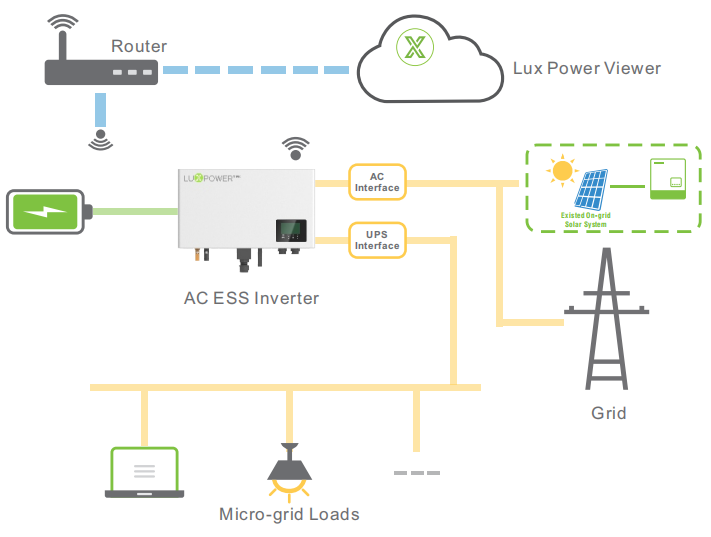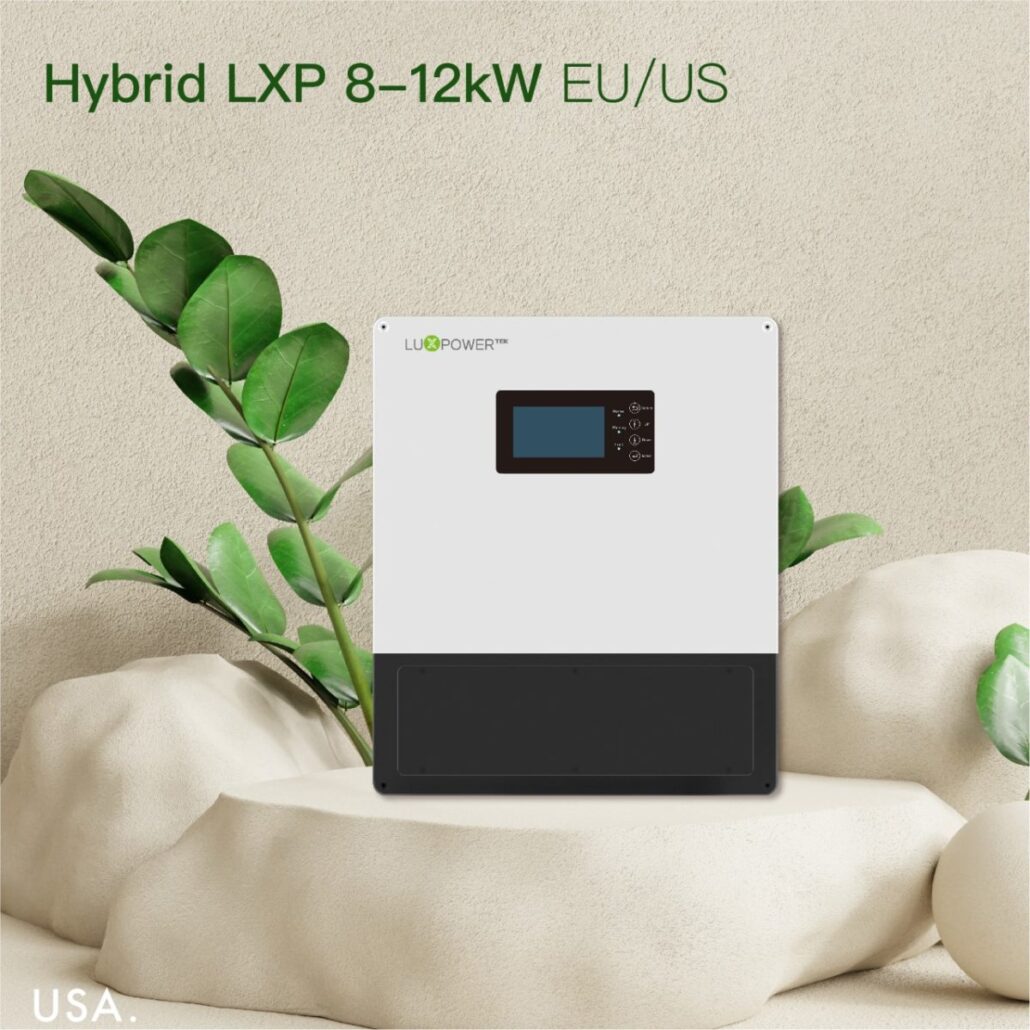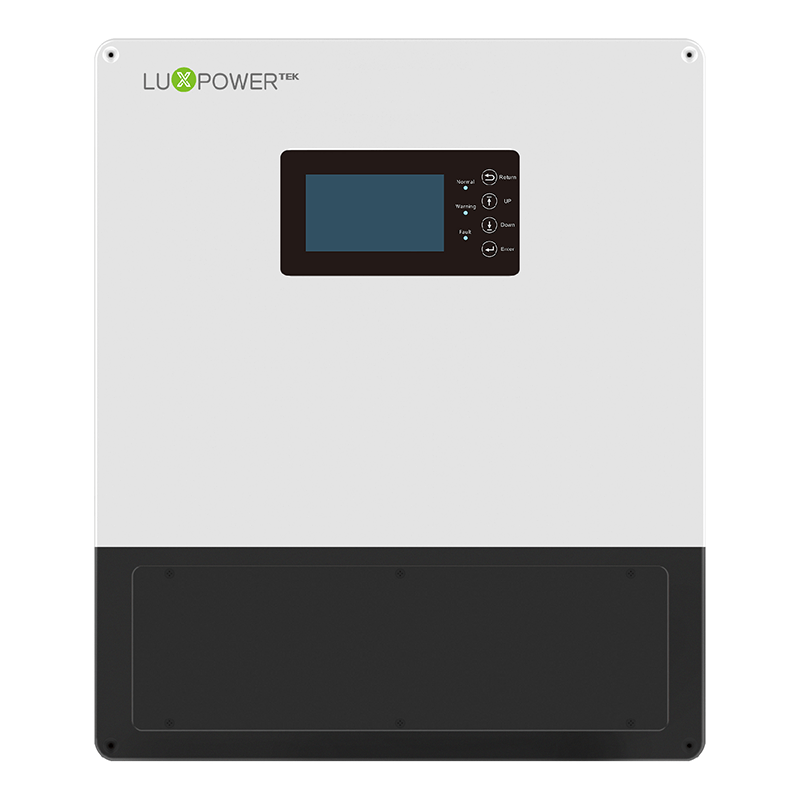
What is a Solar Power Inverter?
A solar power inverter is the most important part of a home solar system. Simply put, it converts the direct current of the terrestrial energy into an alternating current. It is then converted into the desired voltage through AC or EPS connection for our daily appliances. A solar inverter system saves us significantly on our electricity bills.
Types of Solar Power Inverter
There are many different types of solar power inverters, but whatever type of solar power inverter you choose, make sure it is CEC approved. A few types of solar battery power inverters are listed briefly below.
String inverters – This solar power inverter for homes is the standard option for most homes. Also known as a central inverter, it is now the most common type of solar inverter. While string inverters are reliable, they are less efficient at optimizing solar output.
Micro-inverter
This solar panel power inverter is suitable for partially shaded environments. Microinverters handle the conversion from DC to AC on a per-panel basis. This allows the solar panel power inverter system to be minimally affected by shadows on individual panels. Similar to power optimizers, microinverters also allow for panel-level monitoring of the solar system. Microinverters are the most expensive solar inverter option, however.
Hybrid inverters
It connects individual units of panels and batteries, and this is undoubtedly one of the new solar inverter power that is now the most popular choice. A solar power inverter uses IP65 for indoor and outdoor use. A solar power inverter uses advanced parallel connection up to 60kW to achieve plug-and-play, seamless sub-10ms Switching.
Solar battery power inverter
Connects batteries to existing systems. Solar battery power inverter easy to use batteries, can use low and high capacity batteries.
Power Optimizer
Another option for handling shaded panels. If you expand your solar panel system in the future, the Power Optimizer system will also require additional power optimizers and potentially other string inverters. Since the power optimizers are located on the roof, it will be more challenging to repair and replace them if they have any problems.
AC Coupled Inverters
Up to 10 units in parallel, scalable to 36kW single-phase and unbalanced three-phase parallel no cable length limit connected to the battery or AC automatically generates host inverters to manage the entire system.
Remotely upgrade BMS firmware-wise range of compatible battery brands wake up lithium batteries when the batteries are official information is uploaded to the Lux server for quick ESS diagnostic flexible connections with batteries, groups or split are accessible.
Things to note when buying a solar power inverter

The more powerful the solar battery power inverter is, the more expensive it. The size, features, and power of the solar panel power inverter are key factors to consider when choosing inverters for solar power. For example, both inverter solar power and inverter/charger provide current from the stored battery power.
However, only the power inverter/charger is connected to AC power and passes AC power to the device to charge the batteries. When AC power is unavailable, the solar power inverter/charger automatically switches to battery power. Ordinary inverters cannot be directly connected to AC power. We can only choose the most suitable solar battery power inverter by comprehensively considering our needs.
Battery Voltage
The most common type of small battery is the 220V battery. This type of battery is used in cars or small vendors. Power inverters/chargers are also available with 480V, 720V, and higher batteries for applications requiring higher power. In addition to the batteries, you will need fuses and fuse holders. The “ANL” fuse is one of the simplest fuses. It can be connected to the positive wire of the battery pack.
Electrical power
The continuous output rating or inverter/charger of the inverter must be higher than all other devices that are being powered simultaneously. That is, we should always purchase an solar power inverter with twice the power (wattage) required. And unless you have a very specialized application, please try to avoid inverters that exceed 3000 watts.
Table : Typical Wattage of Common Home Appliances
| Device/Appliance | Typical Wattage |
|---|---|
| Desktop Computer with Monitor | 200 – 400W |
| Laptop Computer | 20 – 75W |
| Inkjet Printer | 15 – 75W |
| Laser Printer | 500 – 2000W |
| Satellite Dish | 75W |
| Gaming Console | 125W |
| LCD TV, 32″ | 50 – 70W |
| LCD TV, 42″ | 90 – 250W |
| DVD Player | 40 – 50W |
| Table Lamp with Incandescent Bulb | 60W |
| Table Lamp with CFL Bulb | 13 – 15W |
| Table Lamp with LED Bulb | 6 – 9W |
| Fluorescent Tube Light | 40W |
| Blender | 300 – 1000W |
| Toaster | 800 – 1500W |
| Coffee Maker, Drip | 550 – 1200W |
| Coffee Maker, Keurig | 200 – 1500W |
| Microwave Oven | 1000 – 2000W |
| Mini Fridge | 350W |
| Refrigerator, 15 cu ft. | 240W |
| Chest Freezer 15 cu ft. | 180 – 500W |
| Vacuum Cleaner | 300 – 1500W |
| Tabletop or Box Fan | 50 – 120W |
| CPAP Machine | 200W |
| Hair Dryer | 1200 – 1600W |
| Flat Iron | 800 – 2000W |
| Sump Pump | 850 – 1200W |
| Space Heater | 1000 – 1500W |
| Furnace Fan | 75 – 400W |
| Electric Drill | 700W |
| Electric Screwdriver | 60 – 300W |
| Circular Saw | 1250W |
| Jig Saw | 350W |
Input Connection
The solar power inverter for home is small and portable, plugging directly into the 12V socket of the vehicle (cigarette lighter). The DC input terminals on heavy-duty inverters allow for direct connection via a cable supplied by the user. So choose a solar power inverter connection that is most convenient for you.
Peak and Continuous Power
Some tools, appliances, and pumps need temporary power that exceeds the continuous power rating of an inverter. Search for an inverter/charger capable of providing such peak power by up to 200% of its continuous power rating.
Settable Circuit Breaker
This feature protects your inverter/charger from damage caused by overload or charger failure.
Other Special Features about solar power inverter
Consider whether these features are necessary to power your inverter/charger safely and efficiently.
- USB port: You can charge your cell phones, tablets, and wearable fitness trackers easily.
- Remote Control Capability: Some inverters/chargers have an RJ45 communication port, which allows for an optional remote control module connection.
- Status LEDs: Displays battery level and low warnings, load level warnings, overload warnings, system faults, and operating mode.
- Configurable DIP Switch: Customize automatic high and low voltage switching to suit your application.
- Pure sine wave output: Variable speed power tools, sensitive electronic devices, such as computers, network equipment and A/V equipment.
- GFCI Receptacles: OSHA compliant for use in wet environments, including near sinks.
- Hospital grade receptacles: UL listed for use in patient care areas
- High Initial Power: Equipment with high initial power requirements such as pumps, compressors and motors will be supported by peak surge.
Receptacles
You should consider how many receptacles are needed and whether special protection is required for GFCI receptacles that operate in humid or wet environments. Many heavy-duty chargers/inverters can be hardwired into your main electrical panel to supply current directly to your AC outlet. Professional electricians are recommended for installation.
Runtime
If the power inverter is used on a moving object, such as a car, battery storage capacity and runtime are very important.
What wattage solar panel power inverter do I need?

One of the main differences between inverters is the power before deciding which solar power inverter for a home to choose. We first must consider how much power is used for all the devices. Then, make sure that the solar power inverter for home you select can produce enough AC power. So, how long will the best solar power inverter run while in use? As long as the engine is still running and there is battery power, it can run indefinitely. This question is usually spelled, “How long do want the load to last?” You can then calculate to specify the battery pack size that meets your requirements.
The formula and rules for estimation
- watts = volts x amps
- approximately 10 DC currents. In a 24 volt power inverter, approximately 10 DC current from the battery is required for every 200 watts of inverter load
Example Power Inverter Calculation
- Wattage required for total output = 1000 W
- 12 v battery = 1000 ÷ 10 = 100 AD
- 24 v lithium battery = 1000/20 = 50 AD
Example of Amp Hour (AH) calculation
How True Choose Sine Wave Or Modified Sine Wave?
A pure sine wave inverter is a more sophisticated option. But as the cost continues to drop, it becomes more affordable. A modified sine wave inverter is still a viable option if you have a limited and simple power supply. However, if you want to ensure that your home appliances and equipment operate safely and efficiently at maximum efficiency, we recommend choosing a pure sine wave inverter.
Advantages of pure sine wave inverters over modified sine wave inverters.
- The output voltage waveform of the sine wave is a pure sine wave without any harmonic distortion.
- Induction loads like microwave ovens or motors operate faster, quieter, and cooler.
- Reduces electrical and audible noises in fans, fluorescent lamps, and audio amplifiers.
- Prevent computer crashes, strange printouts, malfunctions, and noise in monitors.
- Reliably powers the following devices that do not normally work with modified sine wave inverters.
- Some laptop computers
- Some fluorescent lamps with electronic ballasts
- Medical equipment, such as oxygen concentrates
- Radios and digital clocks
- A few battery chargers charge cordless tools
- New furnaces and pellet furnaces that are controlled by microprocessors
- Laser printers, copiers, magneto-optical hard drives
- Power tools with “solid state” power or variable speed control
What battery of solar power inverter should be selected
Above I have briefly described how to calculate the battery capacity. The formula to calculate the battery size is given below. It is simply the total load multiplied by the number of hours of backup and the final result divided by the voltage. The following table beautifully illustrates an example of calculating the battery size, which you can call the inverter battery calculator. Power requirements Backup in a few hours Recommended battery size:
600 W 2H (600 * 2) / 12 = 100Ah
900 W 2H (900 * 2) / 12 = 150Ah
1000 W 3H (1000 * 3) / 12 = 250Ah
Battery Types
There are three types of batteries on the power inverter: flat batteries, tubular batteries, and sealed maintenance-free batteries. Each battery differs according to the internal technology it uses to store current. The differences are in safety, efficiency, battery life, maintenance, and price. A detailed analysis of each battery type is mentioned below.

Flat batteries

Tubular Batteries

Maintenance-Free Batteries
The battery does not require regular refilling with distilled waters, as the name suggests. Other than that, the other best feature is safety. Maintenance free batteries do not emit any toxic or harmful gases. These batteries are expensive and short-lived. The table below explains these differences in a very clear manner.
So you should be aware of solar power inverter:
Finding the best battery inverter compatibility
If you buy inverter solar power first, it is best to ask about battery compatibility and inverter power. If you buy an inverter and battery combo, the combo includes a power inverter, compatible batteries, and solar panels.
Choose a long battery warranty
Inverter warranties are usually free for a certain number of years for all power inverter batteries. After that, it costs money to increase the number of years of repair. Here it is always better to spend more money for a longer warranty. This is different because power inverter batteries are often easily damaged.
Top brands and after-sales support
As we mentioned above, it is always good to buy from a well-known brand or manufacturer. Luxpower’s after-sales support is very useful for unexpected situations such as battery repair or replacement. When a problem arises, our supervisors around the world will visit your home and refill or re-fill the battery distillation level.
Safety tips when using solar power inverters
- After a certain number of years of use, it does recommend to replace the battery. And car batteries are not suitable for repeated long discharge and charge cycles. Must replace them more frequently than deep cycle batteries. The battery’s maximum capacity should be at least 50% before it is charged to prolong its life.
- The ampere-hour battery rating is the most important measure when selecting a battery for use in a power inverter. The battery’s reserve capacity is the time the battery can supply a certain amount (25 amps for most) at 60-75 degrees Fahrenheit. Batteries will discharge more quickly at lower temperatures.
- For hybrid solar inverters 400W or higher, it is important to hardware them and adds appropriate fuses.
- Use proper gauge wire, and a professional electrician is recommended for electrical and wiring operations
- To ensure good heat dissipation from the solar inverter with battery. You should have at least 2 inches of clearance from the top and sides of your installation to allow for heat dissipation and ventilation.
Other similar to solar power inverters
Solar power inverter and UPS
Solar power inverter and generator
Why Buy Solar Power Inverter from Luxpowertek?

We understand that there are many brands of solar power inverters out there for you to choose from. But the important thing is that at Luxpowertek, you get reliable engineering and time-tested reliability, along with excellent customer service. Before any product is sold, it undergoes rigorous quality control. Independent testing facilities also verify that products meet or exceed current safety and performance standards. We are committed to quality and offer industry-leading warranties and responsive customer service. Give your customers the best home inverter battery. That’s what sets luxpowertek apart.

